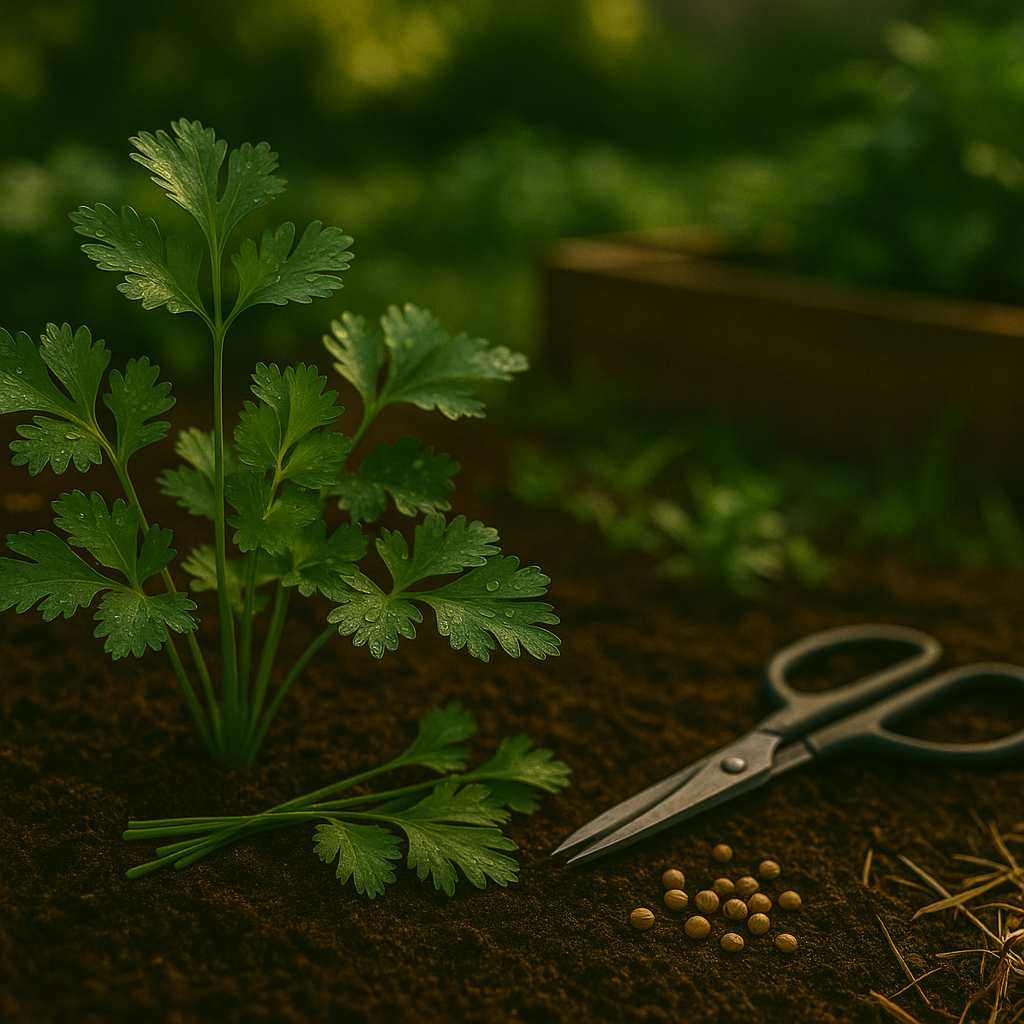Introduction
If you love cooking with fresh herbs, you’ve probably wondered: does cilantro regrow after being picked? Cilantro is a staple in countless cuisines, from zesty salsa to fragrant curries, and its vibrant flavor makes it a favorite in kitchens around the world. Many home gardeners and chefs wish their cilantro plants would last longer, especially after a satisfying harvest.
In this post, we’ll dig into the main question: can you regrow cilantro after harvesting, or is it a one-time crop? We’ll explore what actually happens when you snip your cilantro, whether you can encourage it to produce more, and smart techniques for harvesting to maximize ongoing growth. Plus, you’ll get practical, real-world tips on caring for cilantro to help keep your supply fresh and continuous—so you can enjoy those bright, citrusy leaves all season long.
How Cilantro Grows
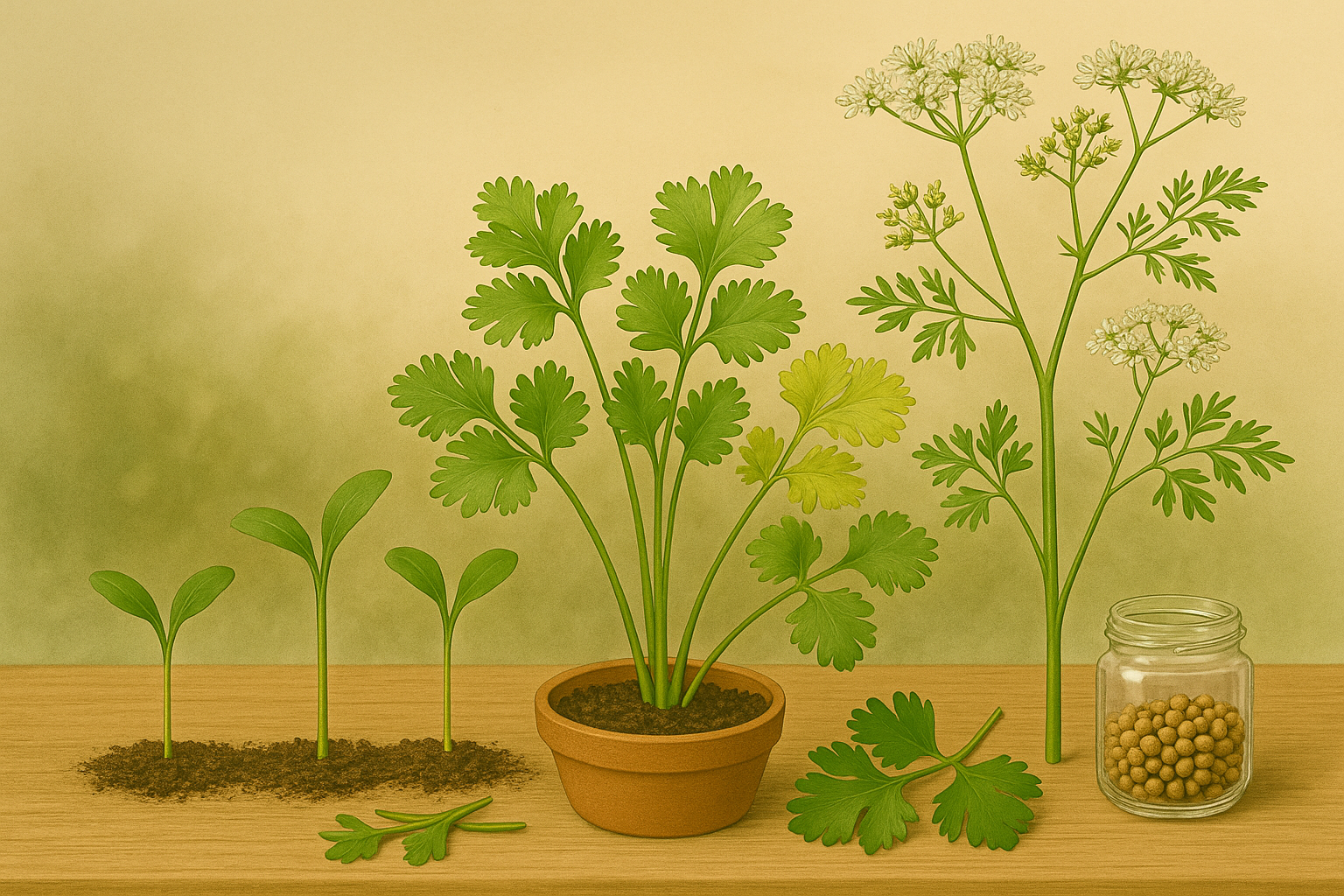
Cilantro, also known as coriander, has a unique life cycle that sets it apart from other culinary herbs. As an annual plant, cilantro completes its journey from seed to maturity within a single growing season. It begins by producing lush, flavorful leaves that are prized in kitchens worldwide.
However, cilantro is well-known for its tendency to “bolt”—a rapid shift from leafy growth to flower and seed production, often triggered by warm weather or longer days. When this happens, the leaves become sparse and develop a more bitter taste, as the plant redirects its energy toward producing seeds (coriander).
Unlike perennial herbs like rosemary or mint, which grow back year after year, cilantro’s cycle ends once the seeds mature, requiring fresh sowing for continuous harvests. Even biennial herbs such as parsley offer more longevity, growing over two seasons.
For gardeners and cooks, this means it’s important to time plantings carefully or try succession sowing—planting new seeds every few weeks—to ensure a steady supply of fresh cilantro. Understanding these basics can help prevent frustration, allowing you to enjoy fresh leaves early in the season and the bonus of homegrown coriander seeds later on.
Best Ways to Harvest Cilantro for Regrowth
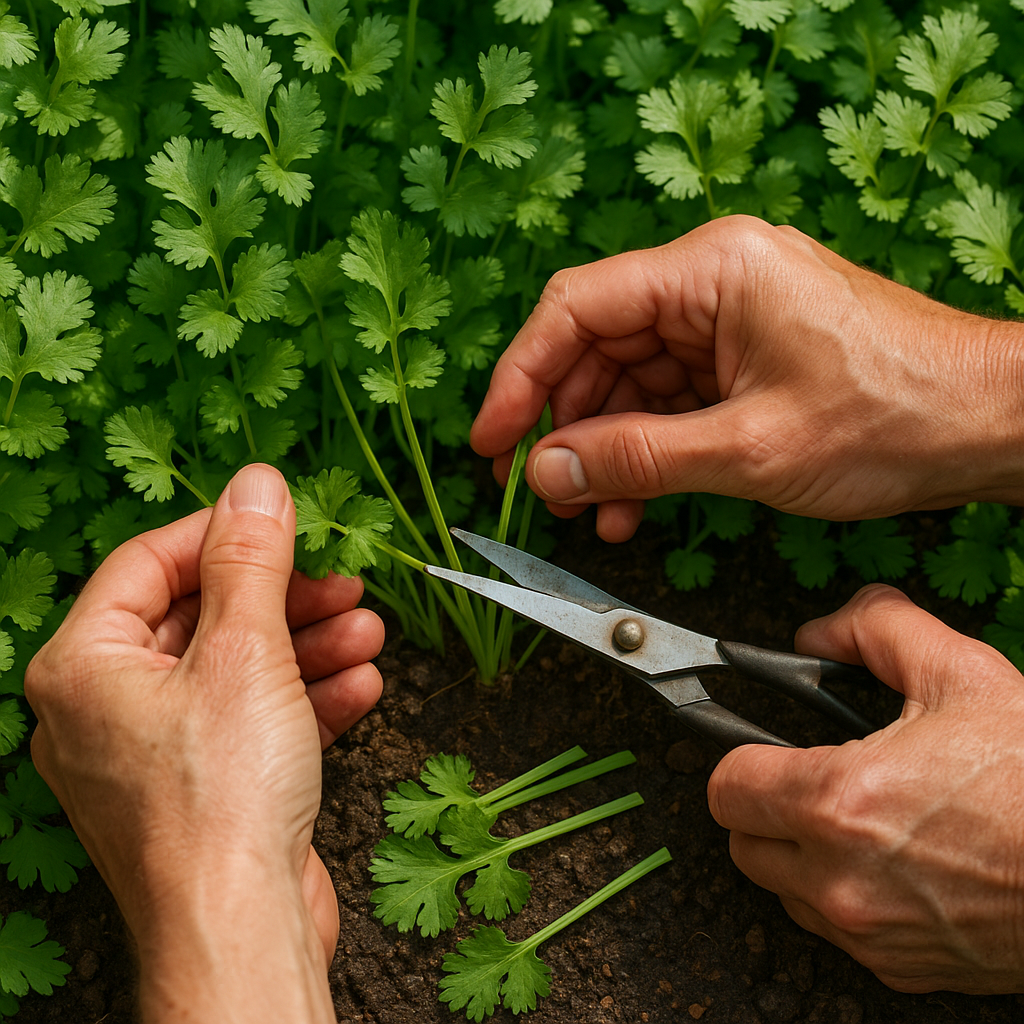
The best way to harvest cilantro for continuous regrowth is to use the cut-and-come-again method. This technique lets you enjoy fresh herbs week after week without exhausting your plants. Start by using clean scissors or garden shears to trim the outer stems about 1 to 2 inches above the soil, leaving the delicate central cluster of leaves and the crown of the plant untouched. This central growth point is crucial for the plant to regenerate quickly.
Aim to harvest when the cilantro is about 6 inches tall but before it starts forming flower buds—usually 3 to 4 weeks after planting. Harvesting in the cool morning hours also reduces plant stress and delays bolting, which is when cilantro sends up a flower stalk and stops producing tasty leaves.
Try to only remove a third of the plant at a time; overharvesting or cutting all the way to the soil can stunt regrowth or kill the plant altogether. Avoid stripping entire stems or yanking leaves, as this can damage the tender roots. A common mistake beginners make is cutting too close to the base or harvesting the central growing stems, which greatly reduces the plant’s ability to recover.
By following these guidelines and consistently trimming just the outer leaves, you’ll keep your cilantro growing strong throughout the season.
Can Cilantro Regrow After Harvest? What to Expect
Cilantro (also known as coriander) can regrow new leaves after partial harvesting, but its regrowth potential depends on several key factors. When you snip the outer leaves and leave the central stem intact—especially in younger, actively growing plants—you’ll typically see new foliage sprout within a week or two.
However, unlike resilient herbs such as basil or mint, cilantro doesn’t rebound as vigorously and is more sensitive to how and when you harvest. Older cilantro plants, particularly those close to flowering (bolting), are less likely to regrow well since they focus their energy on seed production instead.
Optimal regrowth happens when you:
- Harvest only a third of the plant at a time
- Avoid pulling from the roots
- Ensure the plant receives adequate sunlight, water, and cooler temperatures
It’s a common myth that cilantro will regrow endlessly from the same stems like perennial herbs. In reality, cilantro is a short-lived annual and will eventually peter out regardless of care. If you want a continuous harvest, stagger plantings every 2–3 weeks rather than relying on one plant to fully regrow after each trim.
And while some herbs can regrow from cuttings, cilantro doesn’t root easily from stem snippets—fresh regrowth comes from undisturbed roots, or you’ll need to start anew from seeds. Understanding these nuances will help you manage expectations and enjoy a longer cilantro harvest in your herb garden.
Tips to Maximize Your Cilantro Regrowth
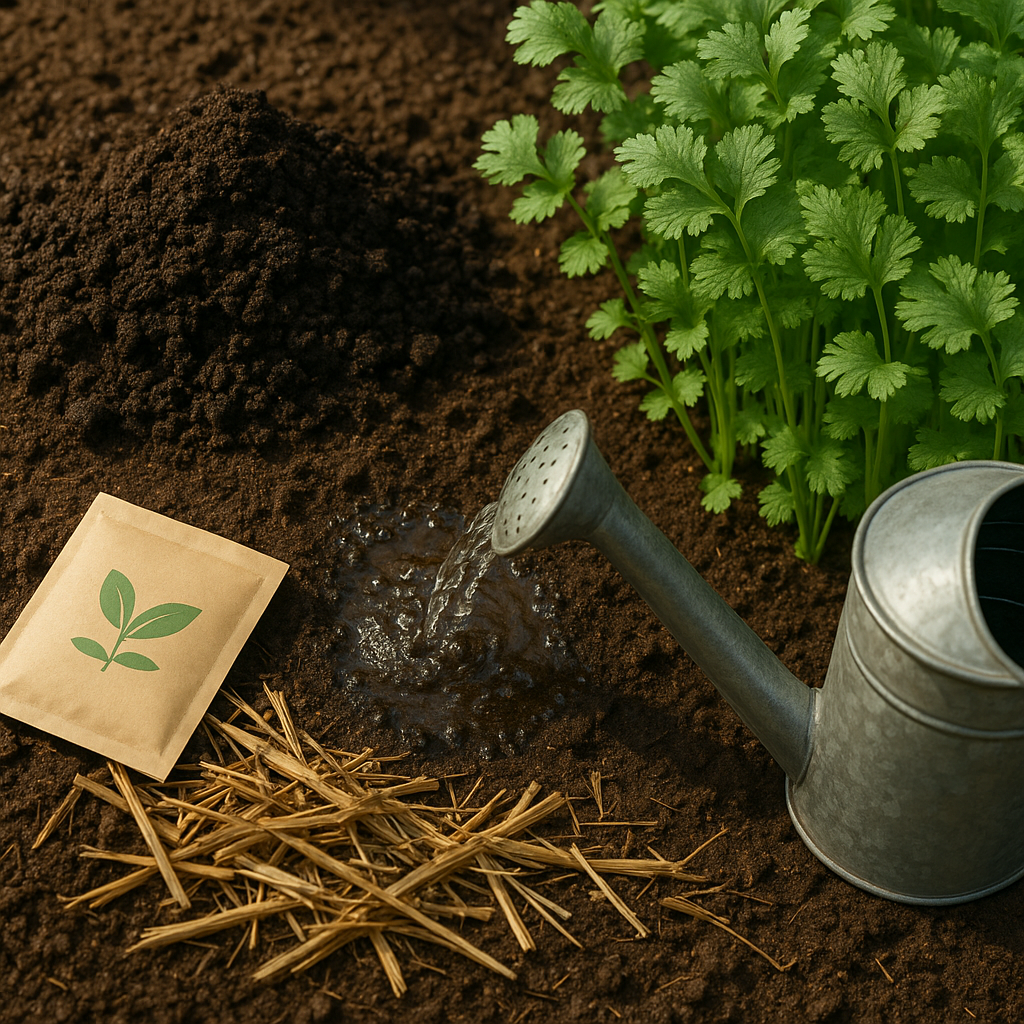
To get the most out of your cilantro regrowth, start with nutrient-rich, well-draining soil—mix in compost or aged manure before planting and after every major harvest. Cilantro likes consistently moist soil but hates soggy roots, so water deeply when the top inch feels dry, especially in hot weather.
Give your plants at least 4-6 hours of bright light daily; if growing indoors, a sunny windowsill or supplemental LED grow lights can work wonders. Feed cilantro with a balanced, diluted liquid fertilizer every few weeks to replace nutrients depleted by harvesting.
For a steady supply, try succession planting by sowing new seeds every 2-3 weeks—this creates overlapping harvests and reduces gaps in availability. To delay bolting (when cilantro flowers and goes to seed, ending leaf production), keep plants cool and pick outer leaves regularly.
Mulch around the base with straw to moderate root temperature and moisture, especially as summer heats up. If your cilantro is growing back weakly or not at all, check for overcrowding—thin seedlings to 2 inches apart to prevent competition and improve airflow.
Yellowing leaves might signal overwatering or nutrient deficiency; ensure drainage is adequate and consider a gentle organic fertilizer boost. By fine-tuning these basics and observing your plants closely, you’ll enjoy lush, flavorful cilantro regrowth throughout the season.
When & How to Start Over
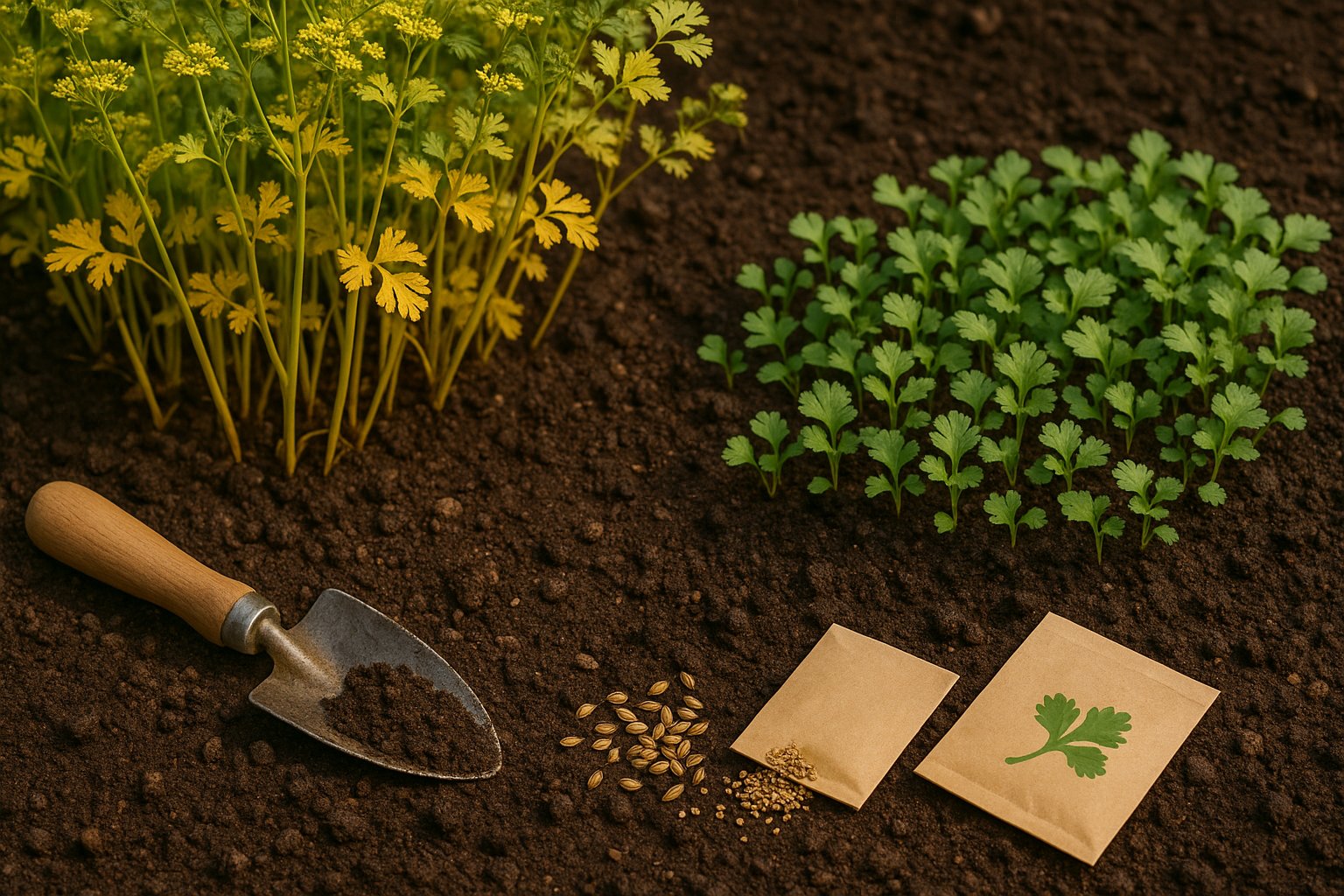
Cilantro plants have a short, finicky lifespan, so knowing when to start over is key to enjoying fresh leaves all season. Watch for signs like yellowing leaves, leggy stems, or premature flowering (bolting)—these signal your plant is past its prime and new seeds should go in.
To keep a steady supply, try succession seeding: every 2-3 weeks, sow a small patch of seeds, either directly in the garden or in containers. This way, as one group matures and bolts, another batch is ready to harvest.
Container growing makes it easy to move plants to cooler, shaded spots once the heat picks up, since cilantro hates intense sun and can bolt quickly in summer.
Don’t waste effort on regrowing spent cilantro; the flavor and yield decline rapidly after bolting. Instead, pull up dying plants and start fresh, mixing compost or fertilizer into the soil to boost the next round.
By staggering plantings and promptly replanting as soon as old plants fade, you’ll always have young cilantro ready to snip—perfect for salads, salsas, or garnishing just about anything. With a little attention, you can keep this tricky herb going strong from spring through fall.
